

NOTICE
The KIBS hydraulic unit [A] has been adjusted and set with precision at the factory. Therefore, it should be handled carefully, never struck sharply, as with a hammer, or allowed to fall on a hard surface.
Be careful not to get water or mud on the KIBS hydraulic unit.
Drain the brake fluid through the bleed valve by pumping the brake lever and pedal.
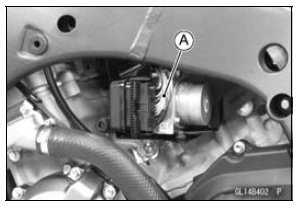
Clear the projection [C] from the bracket.
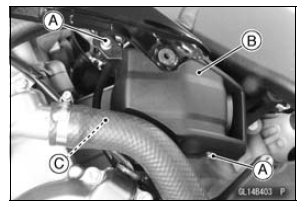
NOTICE
Clean all fittings on the KIBS hydraulic unit and the rear master cylinder because dirt around the banjo bolts could contaminate the brake fluid in the line during removal/installation.
Spread over a shop towel around the KIBS hydraulic unit before removing the brake line so that brake fluid does not leak on the parts.
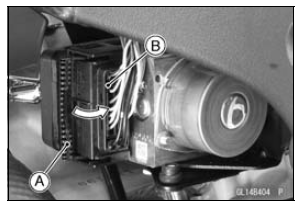
NOTICE
Brake fluid quickly ruins painted plastic surfaces; any spilled fluid should be completely washed away immediately.
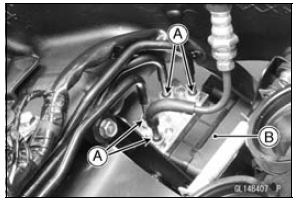
NOTE
Remove the brake hoses and pipes according to each assembly of the exploded view.
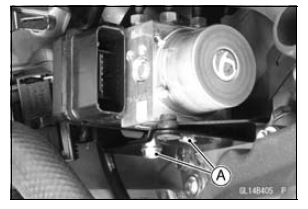
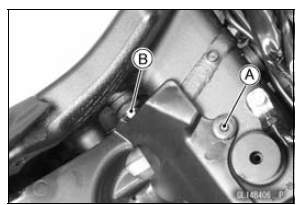
NOTICE
The KIBS hydraulic unit has been adjusted and set with precision at the factory. Do not try to disassemble and repair the KIBS hydraulic unit.
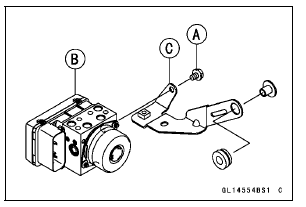
 ABS and KIBS Indicator Lights (LED) Inspection
ABS and KIBS Indicator Lights (LED) Inspection KIBS Hydraulic Unit Installation
KIBS Hydraulic Unit InstallationAir Switching Valve Installation
Install the air switching valve [A] with hose [B] as shown
in the figure.
Front [C]
Left Side View [D]
White Paint [E]
Air Switching Valve Operation Test
Refer to the Air Suction System Damage Inspection in the
Periodic Maintenance chapter.
Air Switching Valve Unit Test ...
Shift Fork/Gear Groove Wear Inspection
Measure the thickness of the shift fork ears [A], and measure
the width [B] of the gear grooves.
If the thickness of a shift fork ear is less than the service
limit, the shift fork must be replaced.
Shift Fork Ear Thickness
Standard: 5.7 6.0 mm (0.224
0.236 in.)
Service Limit: 5.6 mm ...
Brakes
Brake Wear Inspection
Inspect the brakes for wear. For each
front and rear disc brake caliper, if the
thickness of either pad is less than
1 mm (0.04 in.), replace both pads
in the caliper as a set. Pad replacement
should be done by an authorized
Kawasaki dealer.
A. Lining Thickness
B. ...